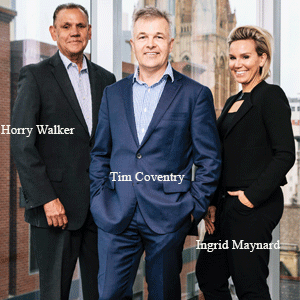THANK YOU FOR SUBSCRIBING

How UX relates to Agile and DevSecOps
David Bejar, Head of DevSecOps & Agile Practices at Allianz Indonesia


David Bejar, Head of DevSecOps & Agile Practices at Allianz Indonesia
About five years ago, I came to appreciate the value of user experience (UX), albeit a bit late in my career, it was through reading a book about DevOps that I recognized the significance and worth of UX. Yet, as head of DevSecOps, I have faced questions about why the UX department reports to me. In this article, I will share my insights based on our experiences which have shaped my perspective on the relationship between UX, Agile, and DevSecOps.
Typically, there are discrepancies between the demands of the business and the IT resources available to fulfill them, including budget. There is always a shortage of software engineers, architects, DevOps professionals, and other roles. This presents a challenge when it comes to allocating resources toward UX. Some may argue that UX simply adds a final touch to a project and doesn't contribute to the actual delivery of results. But is that the case?
A lack of decision-making ability is often the root cause of software problems, leading to applications that are convoluted and difficult to navigate. Without a clear understanding of which features are most important, which are unnecessary, and how they impact the user's experience, we risk overloading our software with excessive screens and features.
This can result in user frustration, poor usability, and high development, support,and maintenance costs. Even as we strive to create solutions, our lack of decision-making ability can cause more problems than it solves, ultimately wasting valuable resources.
Despite the critical role that UX plays in reducing IT spending on unnecessary features and ensuring that software investments satisfy customers rather than frustrate them, it is still considered an optional component of many setups. This is puzzling, especially given the importance of feedback loops in Agile and DevSecOps methodologies, which emphasize removing waste to accelerate the software development process. To prevent the costly mistake of building and maintaining the wrong features, we must incorporate continuous UX research into our DevSecOps and Agile practices.
Once we settled on the importance of UX, we were required to demonstrate its worth to stakeholders. This presented several hurdles, ranging from the more anticipated, such as the prevalent confusion between what is UX and what is UI, to the more nuanced and complex, such as our experience managing engineers contrasting to leading UX talent. In addition, we had to learn how to integrate the typically lengthy UX design cycles with our Agile practices that relied on rapid and short development cycles. While this presented a challenge, there was a wealth of literature available to guide us, and we were able to learn from others who had faced and overcome similar issues.
To prevent the costly mistake of building and maintaining the wrong features, we must incorporate continuous UX research into our DevSecOps and Agile practices
Looking to the present day, the importance and value of UX are no longer in question in our organization they are widely acknowledged and embraced. Our NPS surveys show that our customers hold our digital solutions in high esteem, and the information provided by our UX researchers has forced us to reconsider our hypotheses and priorities. Additionally, our end customers have increasingly adopted our digital solutions. While we have undoubtedly reached a greater degree of maturity in our understanding and practice of UX, we remain vigilant against complacency and are always looking for ways to learn and improve. The pursuit of excellence in UX is an ongoing journey, and we are committed to making progress every day.
Weekly Brief
I agree We use cookies on this website to enhance your user experience. By clicking any link on this page you are giving your consent for us to set cookies. More info
Read Also












